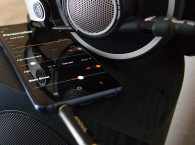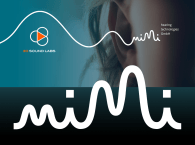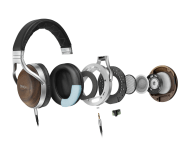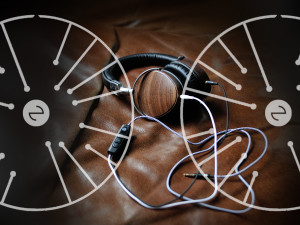 Even is reinventing personal audio with technology that tunes sound to each listener’s unique hearing with its patent-pending Even EarPrint process. A veteran group of sound designers, acoustic engineers, mastering technicians, and audiologists have perfected a personalization process for headphones and earphones that measures the user’s reactions to a series of eight different frequencies in each ear in only 90 seconds. This enables correction of earphone and headphone responses each time they are used.
Even is reinventing personal audio with technology that tunes sound to each listener’s unique hearing with its patent-pending Even EarPrint process. A veteran group of sound designers, acoustic engineers, mastering technicians, and audiologists have perfected a personalization process for headphones and earphones that measures the user’s reactions to a series of eight different frequencies in each ear in only 90 seconds. This enables correction of earphone and headphone responses each time they are used.Most of our readers are familiar with the room compensation/speaker correction systems for recording studios and home listening. The calibration process consists of the generation of test signals that are sent to the amplifier and the individual speakers. The response of the speakers at various locations are then captured by a measurement microphone at the listening position(s).
While these compensation techniques for room/speakers can make substantial improvements to the accuracy of sound reproduction, there are some intrinsic limitations. Specifically, during calibration you have to choose whether you want one sweet spot or a compromised average for multiple listening locations—neither of which address the listener’s hearing deficiencies.
Most of us start out without hearing defects, but life has a way of putting wear and tear on our hearing. Too many rock concerts or too many years on subway trains take their toll. NYC commuters typically have a cookie cutter bite mid-band from screeching wheels and then there is “the musician’s ear” or worse “the shooter’s ear,” all of which affect your hearing. It is not unusual for the left ear to have a response different from the right ear. Stiffening to the tympanic membrane due to aging droops the top-end response.
Audiology testing procedures for hearing aid fitting is not really the right procedure for earphone/headphones as the bandwidth is not wide enough for music auditioning. The standard and most common type of hearing test is pure tone audiometry, which we will discuss in more detail—but essentially the process measures the air and the bone conduction thresholds for each ear in a set of six standard frequencies from 250 to 8,000 Hz.
EQ correction for earphones and headphones can benefit even more from response processing than speaker/room correction. The patent-pending Even EarPrint technology (currently five patents have been filed with more on the way) measures your reactions to a series of eight different frequencies in each ear, based on the industry-standard “threshold of hearing test” used by audiologists and the test has been extended to better fit the music spectrum. A high-resolution version uses 16 bands (wider frequency coverage, narrower bands, and higher-resolution amplitude range).
EarPrint then compensates differently for each ear, creating a precise improvement in the sound and music listening experience. The listener is now “in the correction loop” along with the earphone/headphone including compensation for your left and right ears idiosyncrasies. Unlike loudspeakers and rooms, there is no compromise when averaging for multiple listening positions. While earphone and headphone responses can vary each time you put them on, the Even EarPrint calibration procedure is only 90 seconds and the process can be done each time for critical auditioning.
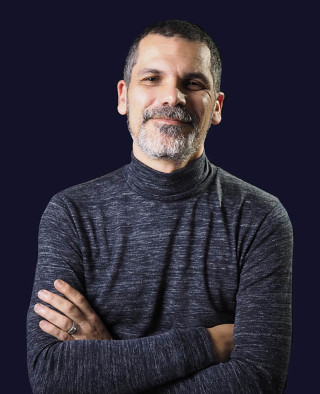
CEO, is a classically trained composer, musician,
and commercial sound designer. When Danny
realized his hearing was deteriorating over time,
he asked: “Why aren’t headphones like glasses?”
Danny Aronson is a musician, commercial sound designer, and the co-founder of Even (see Photo 1). Aronson eventually realized his hearing was deteriorating over time. He had the same issue with his eyesight, which was easily solved with a pair of prescription glasses. In a conversation with Ofer Raz, a veteran CTO and entrepreneur, Aronson and Raz wondered why headphones weren’t more like glasses. And questioned whether headphones could adapt sound to the way each individually hears, as is done with eyesight, to provide 20/20 hearing.
Each person’s hearing is as unique as a fingerprint — everyone hears frequencies differently and each person hears differently in each ear (see Figure 1). Hearing also changes over time—and not for the better. Most people think that only people with severe hearing loss need any kind of audio enhancement. The truth is that we ALL need audio that’s tuned to the way we hear.
Legacy audio devices are a “one-sound-fits-all-once-and-for-all” design. In a category that equates extravagant price with quality isn’t it time that someone challenged the basic precepts of the audio world—the notion that we all hear exactly the same and that we all have perfect hearing—and created an affordable solution? Especially when a visit to a hearing aid center could set you back a few thousand dollars.
Shouldn’t everyone be able to hear more precisely, without the need to pay an arm and a leg for what is basically an outdated, one-sound-fits-all design? But how do you get people to understand what they are missing and (literally) paying heavily for it?
Connecting with a team of audiologists, mastering engineers, and sound designers, Even developed a 90 second, self-administered “EarPrint” evaluation test that determines how you hear in each ear across a wide range of frequencies and provides a patent pending portfolio of algorithms that compensates, in real time, for your specific hearing.
For reference, a conventional audiological hearing test provides an evaluation of the sensitivity of a person’s sense of hearing and is most often performed by an audiologist using an audiometer. An audiometer is used to determine a person’s hearing sensitivity at different frequencies.
Prior to the hearing test itself, the ears of the client are usually examined with an otoscope to make sure they are free of wax, the eardrum is intact, the ears are not infected, and the middle ear is free of fluid (indicating a middle ear infection). The most common reasons to develop hearing loss are due to genetic disorder, aging problems, exposure to noise pollution, infections, birth complications, trauma to the ear, and certain medications or toxins.
The standard and most common type of hearing test is pure tone audiometry, which measures the air and bone conduction thresholds for each ear in a set of six standard frequencies from 250 to 8000 Hz. The test is conducted in a sound booth using a pair of headphones connected to an external audiometer. The result of the test is an audiogram diagram, which plots a person’s hearing sensitivity at the tested frequencies.

evaluation process available on Even’s website.
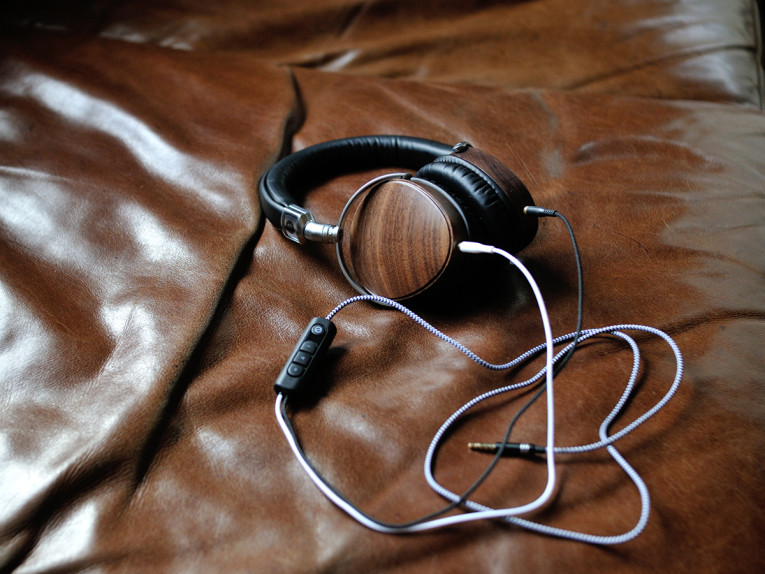
The Even EarPrint is similar to a conventional audiologist evaluation but targeted toward optimization for music auditioning. Today, the Even’s EarPrint electronics fit into an earphone remote control dongle or a Bluetooth DSP processor. Even is now licensing its EarPrint process to earphone and headphone brands and manufacturers in addition to offering its own Even-branded earphones and headphones (see Photo 2).
The Even EarPrint Test Workflow
The Even EarPrint uses a modified threshold of hearing test to get a user’s “Music Auditioning Audiogram,” which is an indication for the algorithm to figure out what compensation is needed for a better music listening experience. The hearing test uses filtered narrow bands of music. It is a change from the classic sine waves and, according to Even, is more suitable for a music-oriented hearing test.
The algorithm is the sophisticated part of the system that refers to the EarPrint and sends instructions to the compensation part of the system as to how much to change and in what frequency range. It also takes into account the differences between ears and an internal balance of the “ear print.”

The compensation is a tailored equalization curve for the specific scenario, it uses “musical” curves researched to be effective for music listening with as little phase shifting as possible. All processing is done in real time. The system has an A/B function to compare the before and after process. Sound is sampled in high resolution to enable good reproduction of music. The system is implemented in a chip within the remote and does not require an app to be installed or even to be connected to a device for the process (see Photo 3). This makes it compatible with most of the music players, cell phones, and laptop computers on the market (see Photo 4). For more information visit www.geteven.co. ax
This article was originally published in audioXpress, June 2017.
Editor’s Note: For readers interested in a comprehensive survey and analysis of these speaker/room correction techniques, we recommend Ron Tipton’s “Room Correction” article series (audioxpress, July - December, 2016). audioXpress articles from 2001 to present can be found on the aX Cache, a USB drive available from www.cc-webshop.com.
Read the review of the Even H1 Headphones in the next page.




